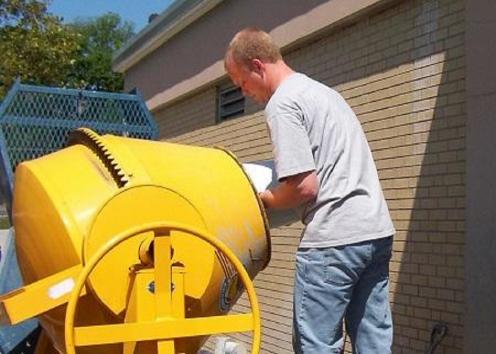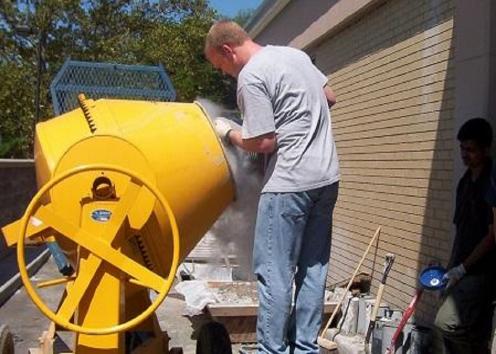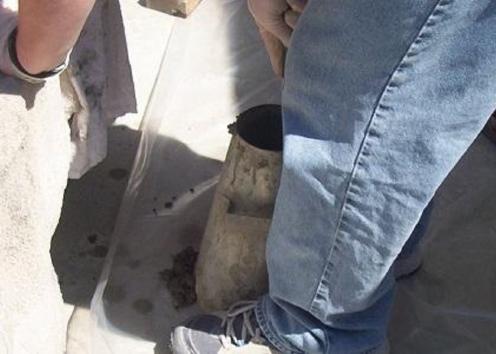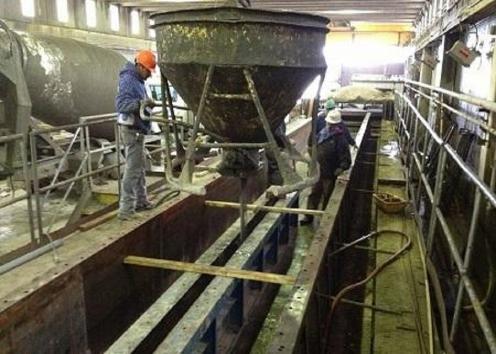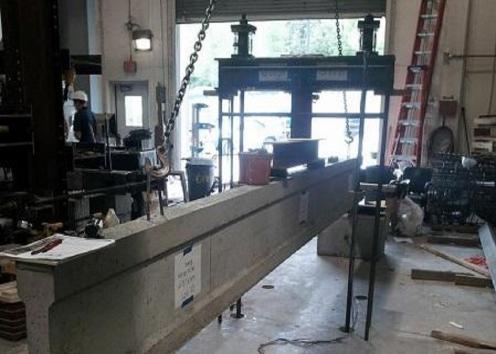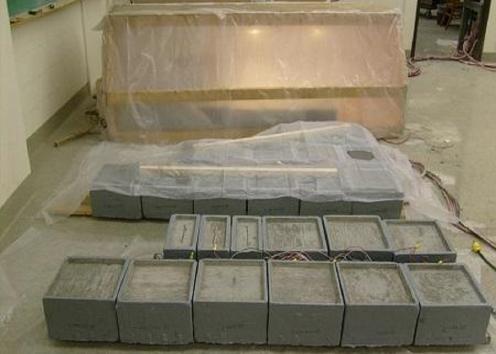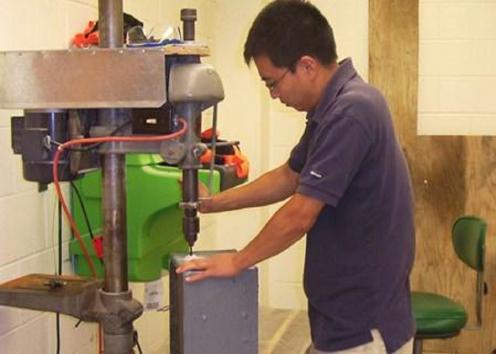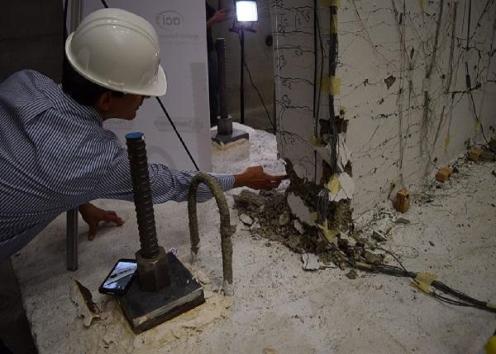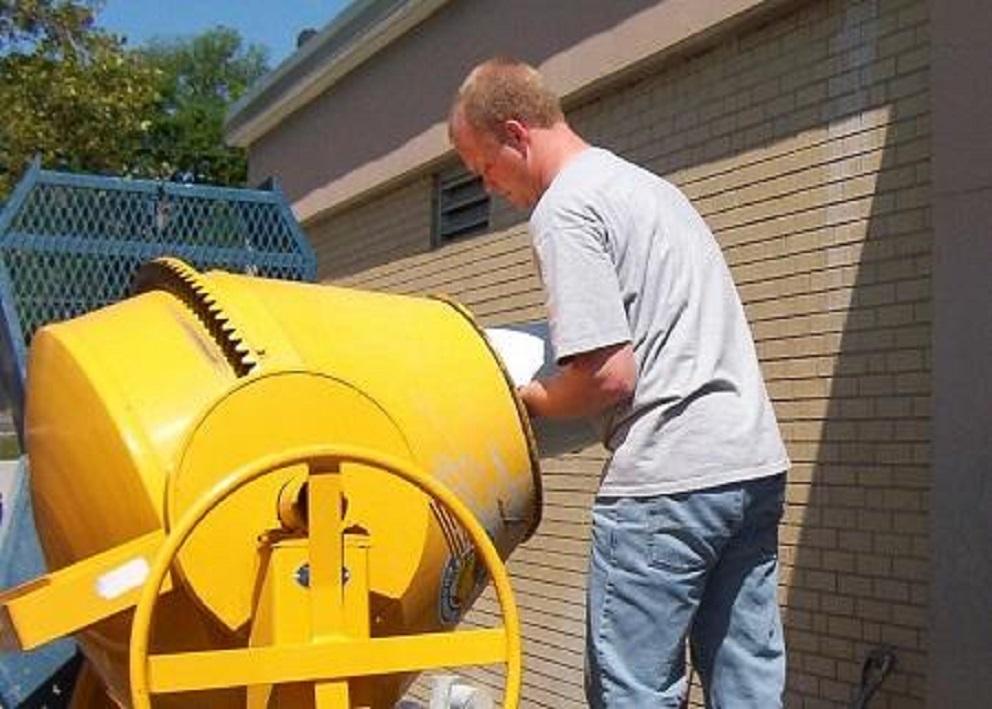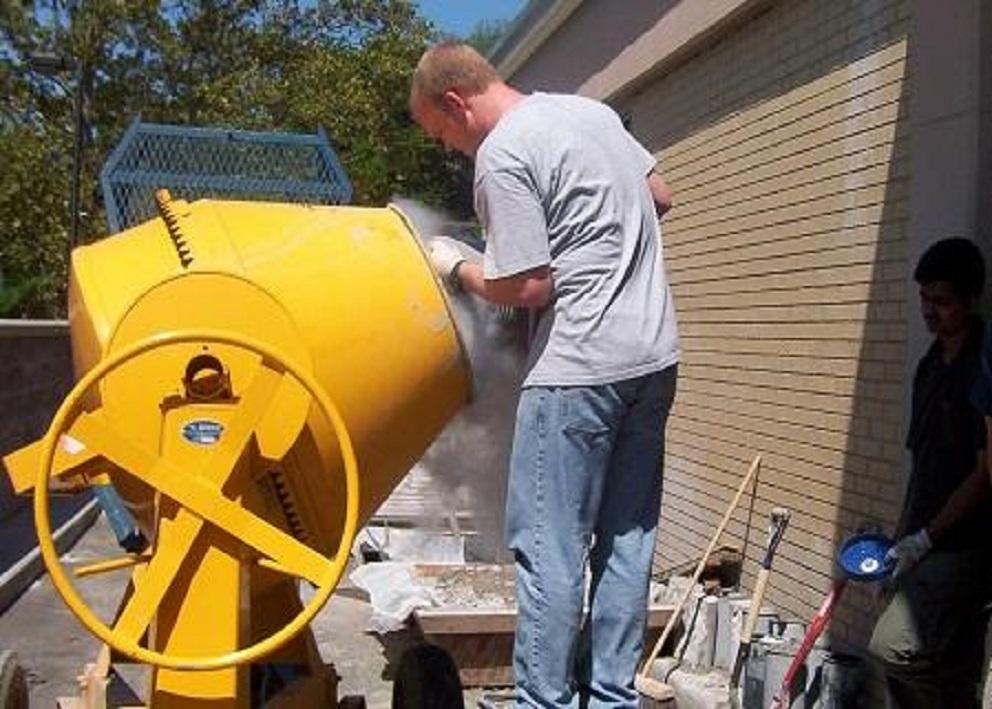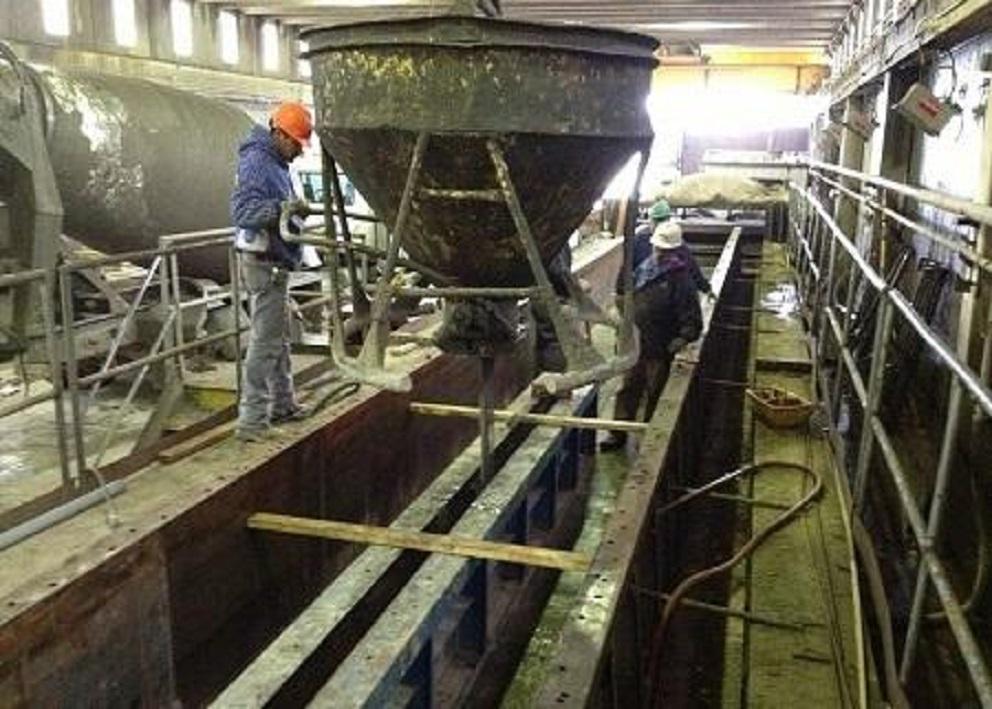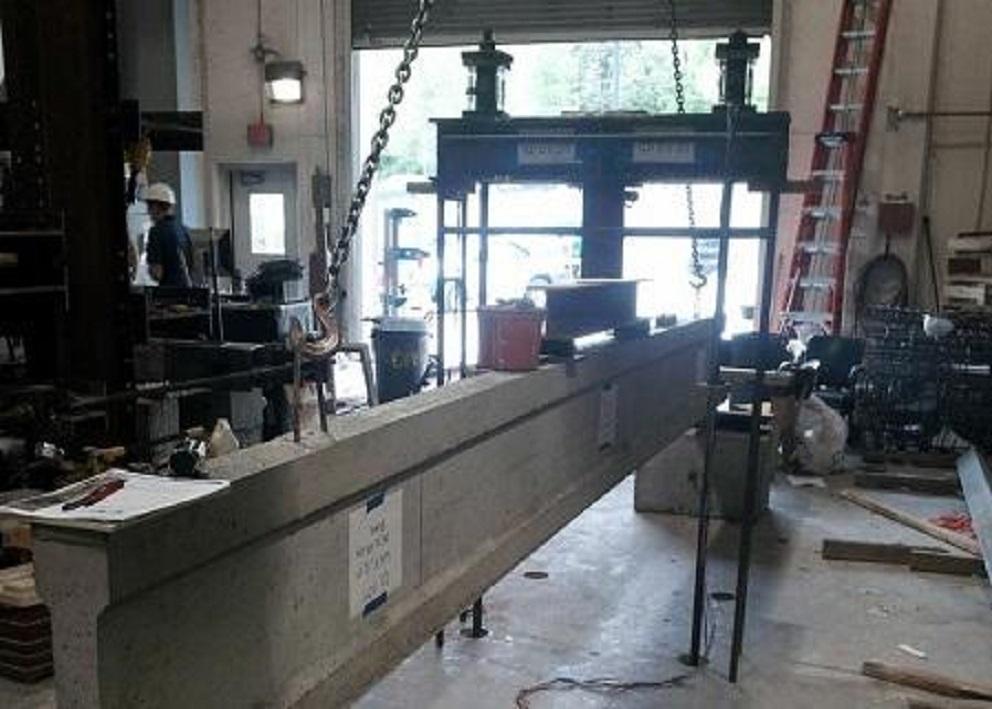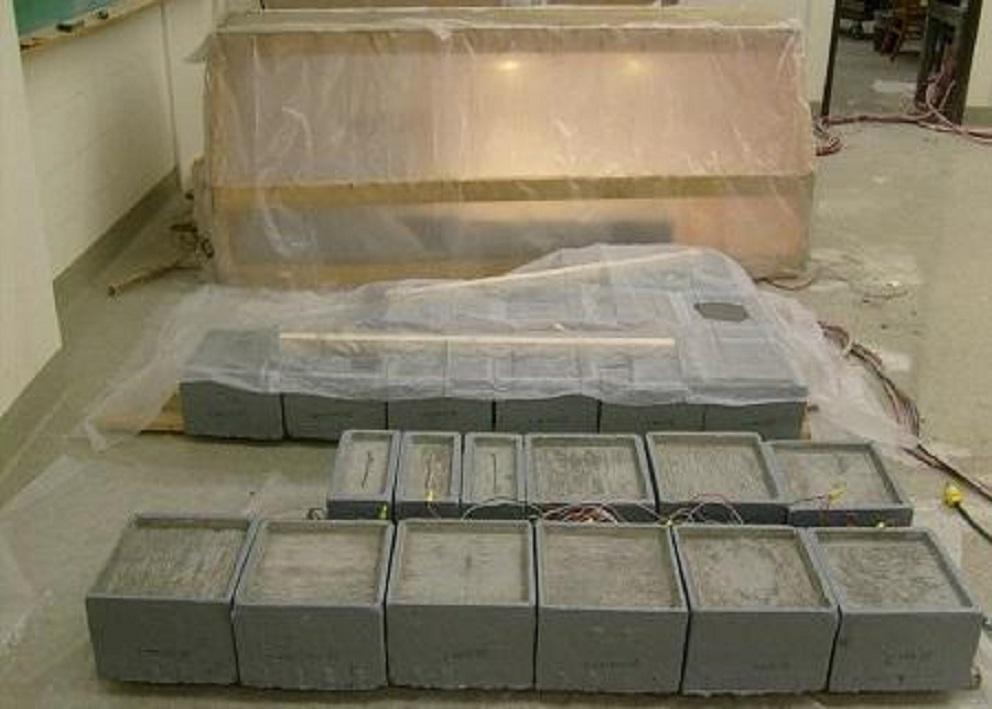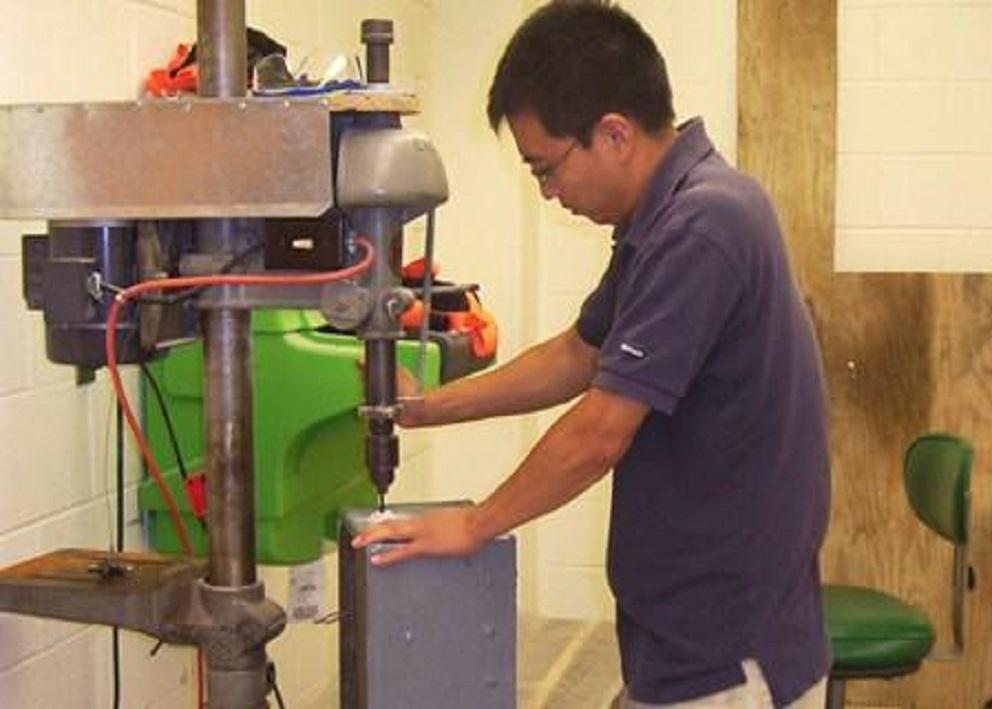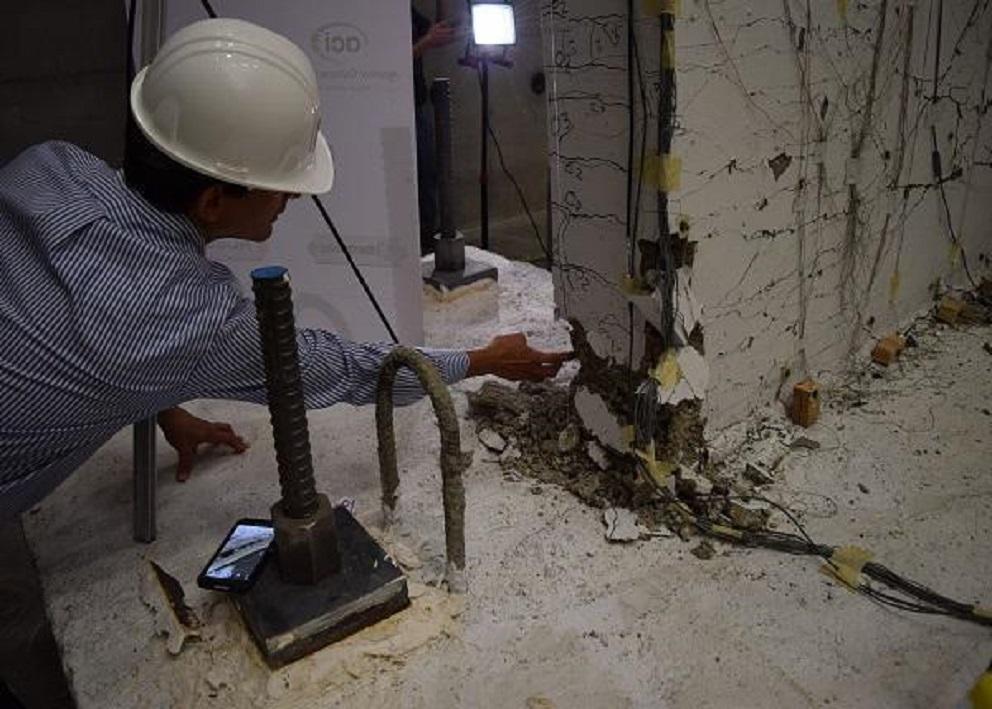Structural Engineering and Material Laboratory
Capabilities and Equipment in Laboratories:
The Structural Engineering and Materials Laboratory is engaged in a wide variety of research in the areas of structural analysis and design, structural engineering materials, and fracture fatigue and corrosion of metals.
Laboratory facilities and capabilities include:
The Structural Testing Laboratory, equipped with static and servo-hydraulic test equipment, has 4000 ft2 of open laboratory area with a clear height of 9 m for large-scale structural testing. Loads up to 45 tons can be applied on 0.9 m centers over a 15 x 25 m area by Amsler and Satec static jack systems. A 50 ton MTS Structural Test System is used for cyclic and dynamic testing of full-scale structural components within the test bay. High-speed Hewlett Packard data acquisition systems are available to monitor and record load, strain, and displacement.
The Concrete Laboratory is equipped to run standard tests on cement, aggregates, and concrete. The laboratory is operated as both a teaching and research facility. Equipment is available to test concrete aggregate for deleterious behavior and to measure aggregate properties as they affect mixture proportioning. Concrete is cured under controlled temperature and humidity in the lab's curing room. Two hydraulic testing machines, with load capacities of 180 tons, are used for concrete strength determination. The Structural Engineering Materials Laboratory has hydraulic and mechanical testing machines with static capacities up to 90 tons. Sixteen-ton and 50-ton closed loop Servo hydraulic universal testing systems (MTS and Instron) are used in conjunction with Hewlett Packard data acquisition and high-speed plotting systems to monitor tests. The laboratory is a 170 m2 facility with independent temperature, humidity, and dust control systems that provides a stable environment for material tests.
The Engineering Corrosion Laboratory is equipped with an electrochemical impedance system, potentiostats, voltmeters, reference electrodes (Calomel and copper-copper sulfate), ion-specific electrodes, and heating cabinets for the Southern Exposure and cracked beam specimens. A pore press provides the capability of extracting pore solution from hydrated cement paste, mortar, and concrete.
An additional 10,000 ft2 expansion was completed in August, 2014.
